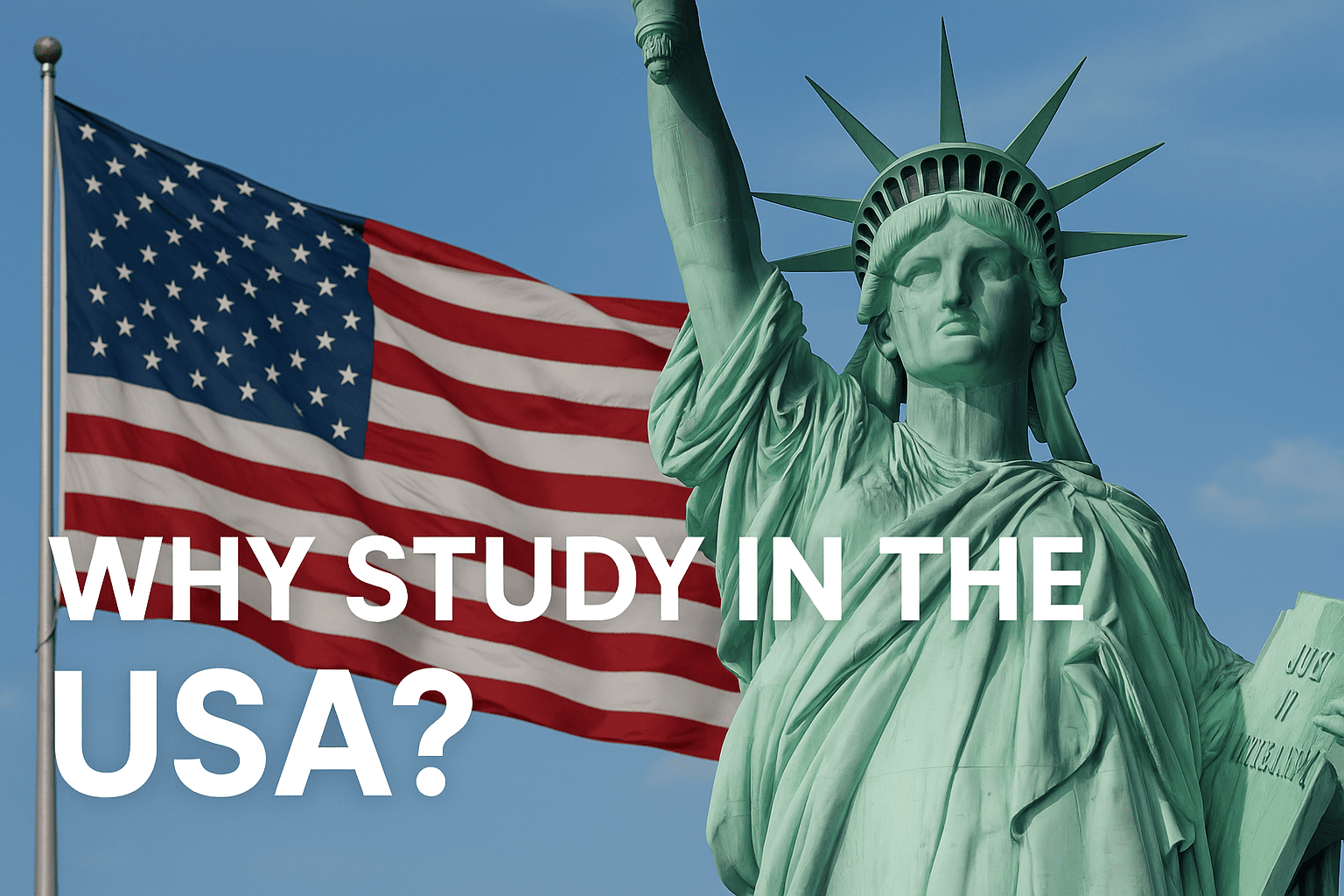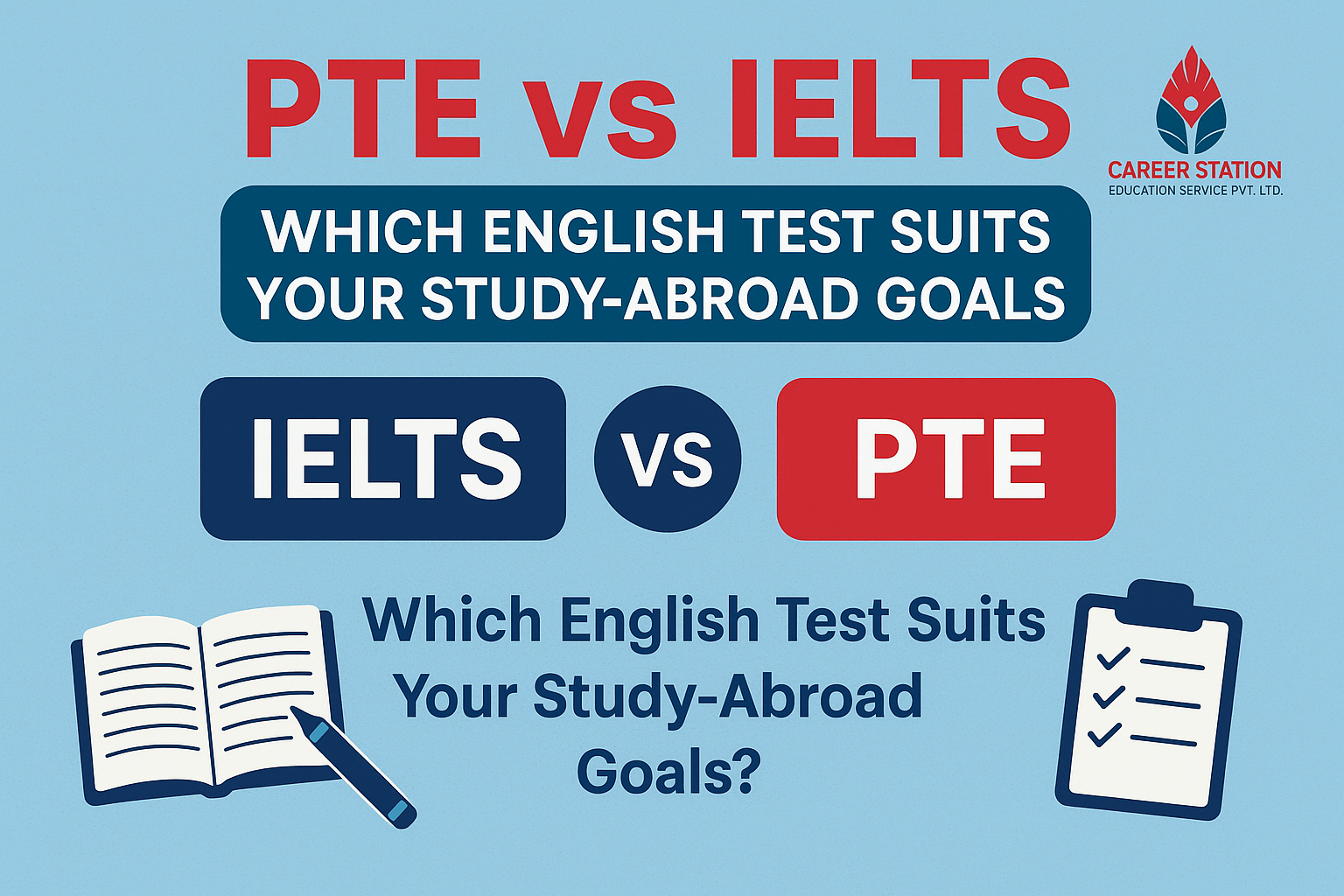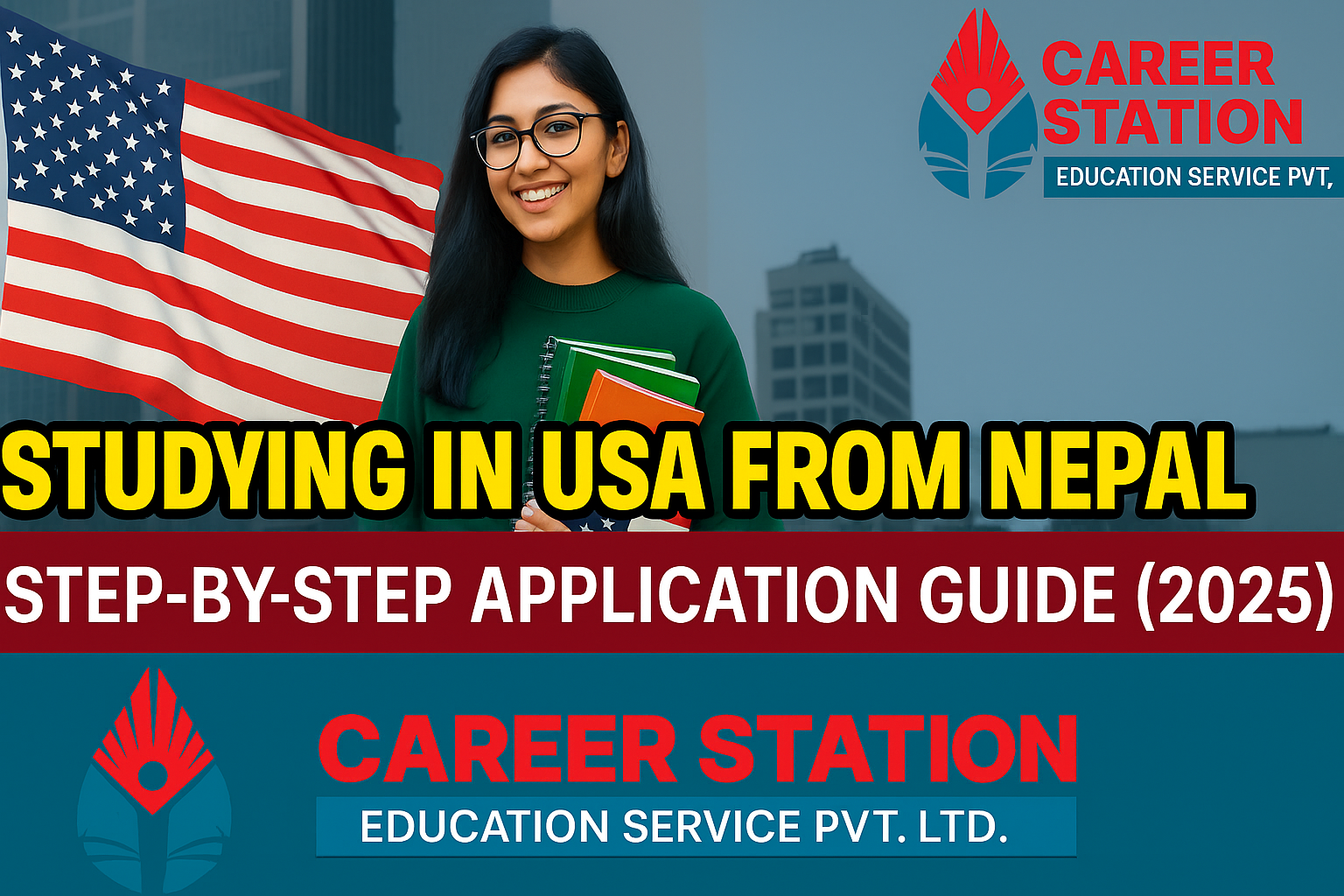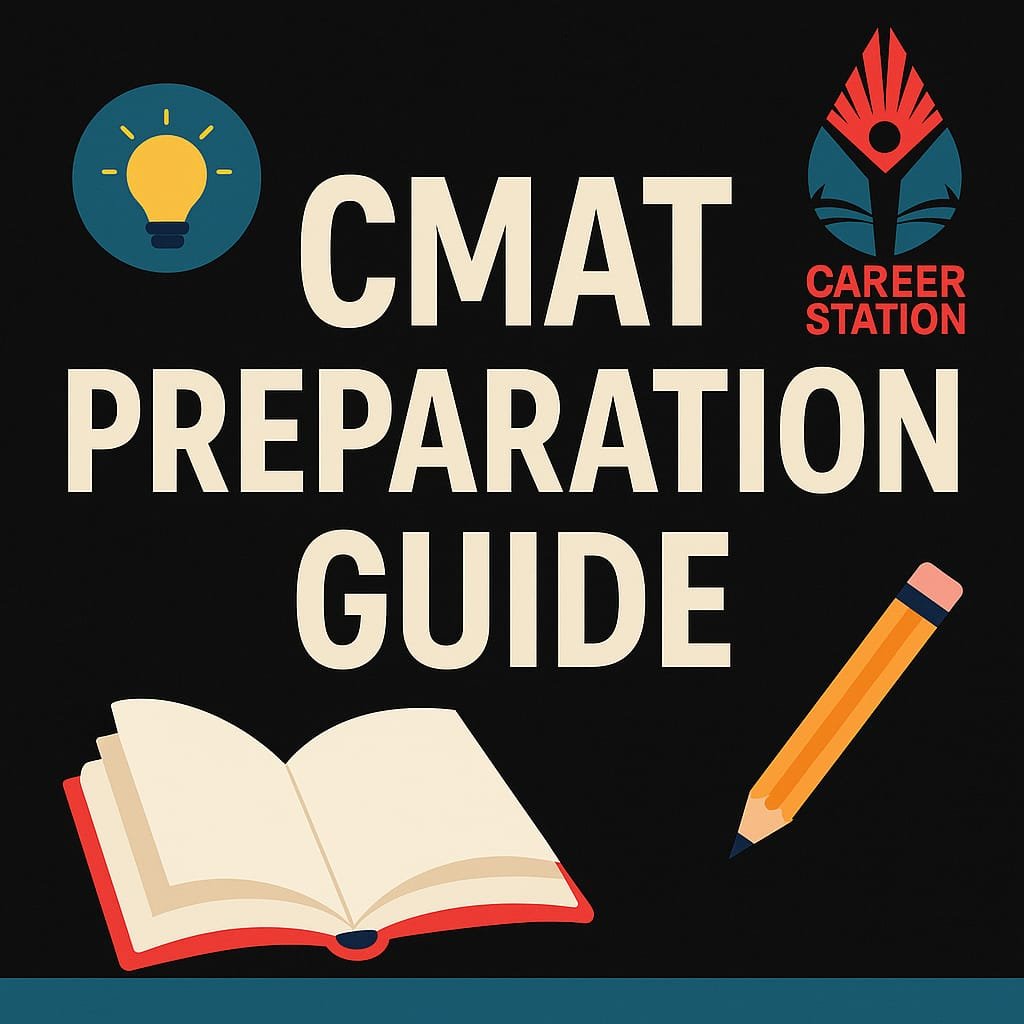
Each student possesses unique reasons and motivations for selecting the US for their degree, and many relate to the advantages that international students can enjoy while studying and living in the US.
Roughly fifty percent of the top global universities are situated in the USA, as per U.S. News & World Report. From bachelor's degrees to doctoral programs, US universities provide highly regarded educational options in every field. In the US, there are over 5,000 institutions of higher education to select from. Each university is distinct and provides something special, ranging from top-notch academics to globally welcoming study programs
Key benefits:
Practical work experience :By registering at a university or college in the US, you might have the opportunity to participate in one or more internships and network with leading employers. Numerous degree programs mandate an internship or co-op for graduation, helping to expand your network and create future opportunities.
Job opportunities:Universities and colleges in the US frequently organize career fairs and frequently conduct career workshops featuring guest speakers from well-known organizations. These occasions link you with industry professionals who can serve as important connections in your professional network.
State-of-the-art facilities : Numerous universities and colleges across the US feature sophisticated research labs, production workshops, and more, enabling you to engage in pioneering research and develop innovative products.
Multicultural encounters : The US hosts individuals from various countries, each bringing distinct cultures and customs. Studying in the US offers you the opportunity to live, work, and learn alongside a variety of people, providing you with important teamwork experience that employers appreciate in a more globalized world.
Top Universities in the USA
1. Massachusetts Institute of Technology
MIT is a prestigious university in the United States, known for its innovative research in science, technology, and other domains that tackle global issues. Established in 1861, MIT consists of five schools (encompassing engineering, science, and management) and one college (computing), all dedicated to pioneering education. This institute has developed into a significant global hub for education and exploration. MIT researchers are making substantial strides in addressing vital global challenges such as artificial intelligence, health, climate change, and poverty. Situated in Cambridge, Massachusetts, by the Charles River, MIT’s campus features a blend of striking structures, with several created by renowned architects. Its position offers convenient access to the lively and creative nearby city. This specifically refers to the Kendall Square region, recognized for its cluster of research and technology firms. The strong relationship between MIT and the business sector has enabled its alumni to become successful entrepreneurs, founding numerous companies and making substantial contributions to the global economy.
2.Harvard University:
Harvard University is an internationally esteemed institution, founded in 1636. This globally renowned university is recognized for its impact and scholarly achievement. Harvard's admission process is very competitive, drawing exceptional students from around the world. Although the typical cost of attendance is substantial, more than half (55%) of undergraduate students receive need-based financial assistance. Harvard has significantly strengthened its dedication to affordability, possibly offering free tuition and additional support to students from families earning $200,000 or below. As incoming undergraduate students (freshmen), you will generally reside in dorms situated in Harvard Yard, a central and convenient area of the university.
In addition to academics, Harvard provides a lively student experience with more than 400 student groups encompassing various interests. This encompasses sports, academic clubs, and extracurricular activities. This offers various chances to interact with other students and participate in campus activities. If you desire a renowned and academically challenging university with excellent global reputation and varied community, Harvard provides a fulfilling and enriching educational journey
3.Stanford university:
Stanford University, situated in the San Francisco Bay Area, is a premier institution renowned for its research, innovation, and influence. Each year, it attracts thousands of students from across the globe, providing an international viewpoint in an environment focused on building a brighter future.
Dedicated to serving society, Stanford stands out in areas such as technology, science, business, and medicine. The expansive campus offers cutting-edge amenities and a lively student atmosphere, featuring more than 600 clubs and a robust sports culture. You will discover a varied and encouraging community, as well as chances to engage with arts, culture, and wellness. Additionally, it's important to mention that more than 70% of Stanford undergraduates obtain some type of financial assistance, and over 80% of undergraduates graduate without any debt
4. California Institute of Technology
One of the 10 Top Universities in the USA is the California Institute of Technology (Caltech), which holds the 10th position in the QS ranking. Situated close to Los Angeles, it is a top-ranking university globally. Caltech emphasizes research and education in science and engineering. It is recognized for its top-notch research facilities, such as the Jet Propulsion Laboratory (NASA's center). Caltech is a preferred option for students eager about technical disciplines and practical sciences. Its entrance process is extremely selective, drawing remarkably skilled individuals from across the globe.
You will become part of a community focused on enhancing knowledge and benefiting society via research-integrated education. Caltech leads in scientific exploration and provides thrilling programs such as the Einstein Papers Project and investigations into solar power. The campus sits close to Pasadena’s lively Old Town and Playhouse District, providing a vibrant student experience with numerous clubs, activities, and athletics (go Beavers!). You will discover chances to engage with music, theatre, and visual arts
5.University of Pennsylvania (Penn)
Penn is a highly regarded Ivy League research institution with a rich history, established by Benjamin Franklin. Penn emphasizes integrating various disciplines and research, providing you with flexibility in your educational journey through distinctive programs and the choice to obtain multiple degrees.
Although admission is very competitive, Penn embraces a varied student population from across the globe. Student life at Penn is diverse and vibrant, offering a wide range of social, cultural, and academic organizations to pursue your passions and meet new people. You will also enjoy outstanding arts and cultural facilities located directly on campus. Penn values sports, providing chances to engage in different levels of competition and recreational pursuits.
Admission Requirements for Studying in the USA for International Students
1. Academic Qualifications
- Undergraduate Admission:
- Completion of high school or equivalent secondary education recognized as comparable to a U.S. high school diploma.
- Minimum GPA usually ranges from 2.5 to 3.5 on a 4.0 scale, depending on the university and program.
- Transfer students need to have completed transferable college credits (typically 12 to 96 credits) with a minimum GPA of 2.5 to 3.0.
- Graduate Admission (Master’s/PhD):
- Completion of a 4-year bachelor’s degree or equivalent from a recognized institution.
- Minimum GPA typically between 3.0 and 3.5 on a 4.0 scale.
2. English Language Proficiency
- Proof of English proficiency is mandatory for non-native speakers. Accepted tests include:
- TOEFL iBT (minimum scores generally range from 61 to 100 depending on program level)
- IELTS Academic (minimum scores typically from 5.5 to 7.0)
- PTE Academic, Duolingo English Test, or Cambridge English (C1 Advanced) are also accepted by many universities.
- Some universities waive this requirement if the applicant has completed several years of education in English-medium institutions.
3. Standardized Tests
- Undergraduate Applicants:
- SAT or ACT scores are often required, though some universities have made these optional.
- Graduate Applicants:
- GRE or GMAT scores may be required depending on the program and university.
Required Application Documents
- Completed online application form.
- Academic transcripts and records of grades (high school for undergraduates; bachelor’s transcripts for graduates), officially translated into English if necessary.
- Proof of English proficiency test scores.
- Statement of Purpose (SOP) or motivation letter explaining your academic and career goals.
- Letters of Recommendation (usually 2-3 letters from teachers, employers, or mentors).
- Résumé or Curriculum Vitae (CV).
- Writing samples or portfolios for certain programs (e.g., fine arts).
- Passport-size photographs.
- Proof of financial resources to cover tuition and living expenses (bank statements, scholarship letters).
- Application fee payment.
Part time opportunities in the USA
What types of employment can F-1 visa students pursue while studying in the United States?
F-1 visa students generally face fewer work limitations in the United States compared to M-1 visa students. Holders of F-1 visas are permitted to work a maximum of 20 hours each week throughout the academic year and up to 40 hours weekly during breaks.
In general, international students have the opportunity to work either on-campus or off-campus, provided that their off-campus employment is related to their area of study. A student from another country, for instance, might not work as a barista or shop assistant if they seek employment outside the campus.Students on F-1 visas may look for paid work in four specific sectors:
On-Campus Employment: Students can begin working on campus starting in their first year of college. These positions do not have to be related to their field of study.
Off-Campus Employment: International students can engage in off-campus work under limited situations. International students facing financial difficulties might seek an off-campus job as long as they retain their F-1 status and have finished their first year of study.
Curricular Practical Training (CPT): Through CPT positions, students will engage in a paid internship-style work experience. Students are required to seek employment connected to their field of study.
Optional Practical Training (OPT): foreign students are eligible to seek employment in the U.S. for a maximum of 12 months following graduation (STEM graduates may work for up to 24 months post-graduation). You need to secure employment in your area of expertise.
Post study work visa
The F-1 visa offers international students in the USA a key post-study work opportunity through Optional Practical Training (OPT), which allows them to gain work experience directly related to their major field of study.
What is OPT?
- OPT is a temporary employment authorization available to F-1 students who have been enrolled full-time for at least one academic year.
- It permits students to work off-campus in jobs related to their degree program either before completing their studies (pre-completion OPT) or after graduation (post-completion OPT).
- Most commonly, students use post-completion OPT, which allows up to 12 months of work authorization after finishing their degree124.
Eligibility for OPT on F-1 Visa
- Must be in valid F-1 status and have maintained full-time enrollment for at least one academic year.
- Must be physically present in the U.S. at the time of application.
- Must have not used more than 12 months of full-time Curricular Practical Training (CPT) at the current degree level.
- Employment must be directly related to the student’s major field of study



